Bloody battle of Mametz Wood commemorated 100 years on
- Published
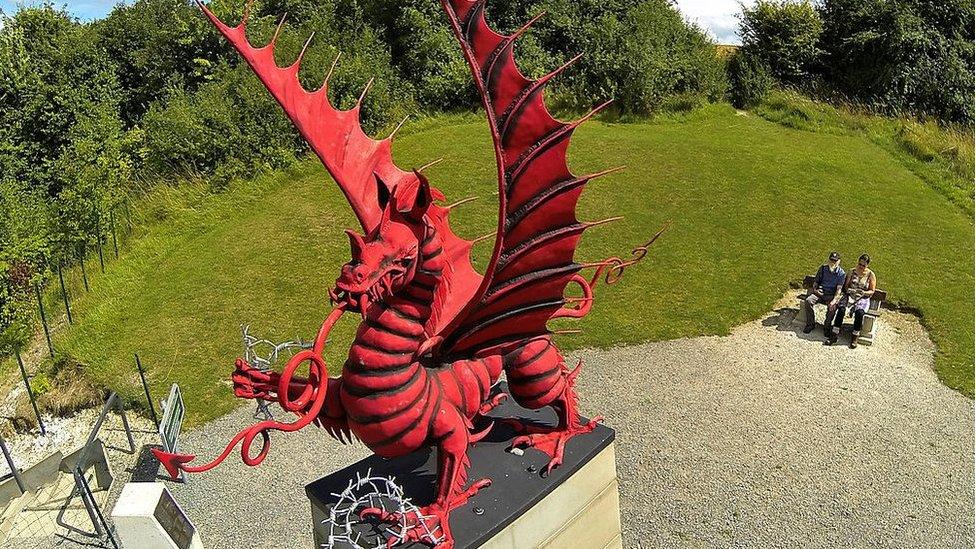
Statue of a Welsh Dragon in Mametz
Acts of commemoration and reconciliation have been held for the Welsh soldiers who died during the battle of Mametz Wood in northern France 100 years ago.
The 38th (Welsh) Division attacked Mametz Wood between 7 and 14 July 1916.
More than 4,000 soldiers were killed or injured.
The main act of remembrance took place at the site of the Welsh dragon memorial, facing the wood.
First Minister Carwyn Jones was among those who attended the service in northern France
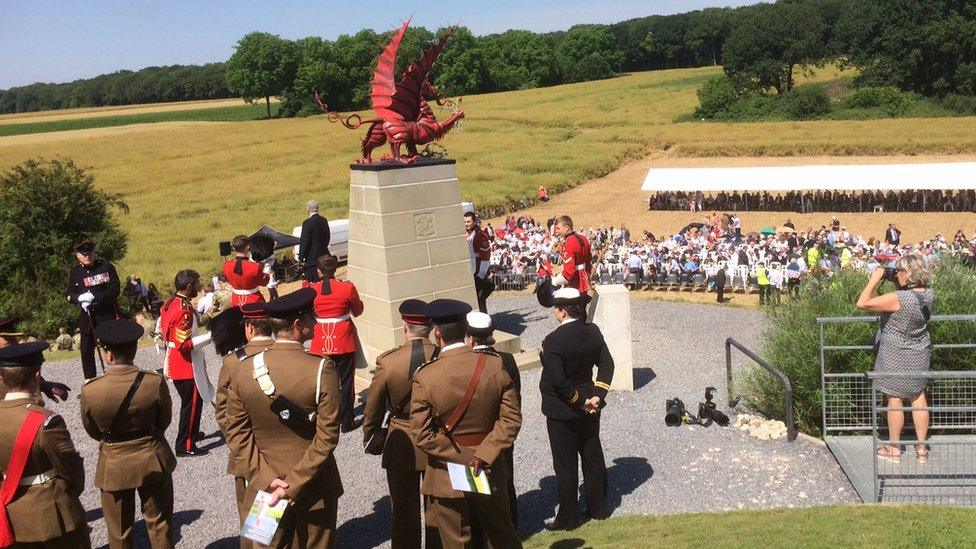
Remembrance service at the Welsh dragon memorial
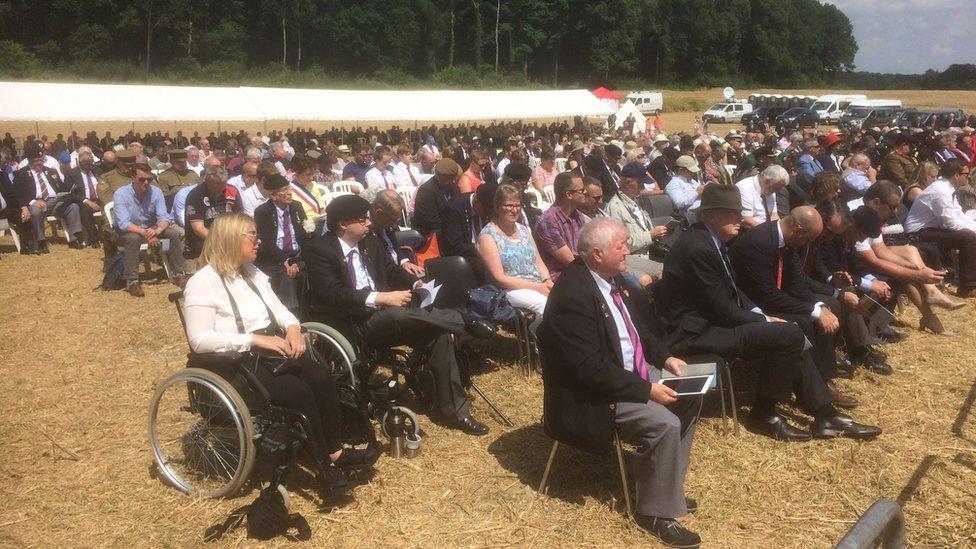
A crowd at Mametz Wood service
Another service took place in Flatiron Copse cemetery and was attended by a number of people who were visiting the graves of family members.
A Welsh flag and poppy was placed on every Welsh soldier's grave.
More than 100 people from Wales attended the commemoration at the cemetery
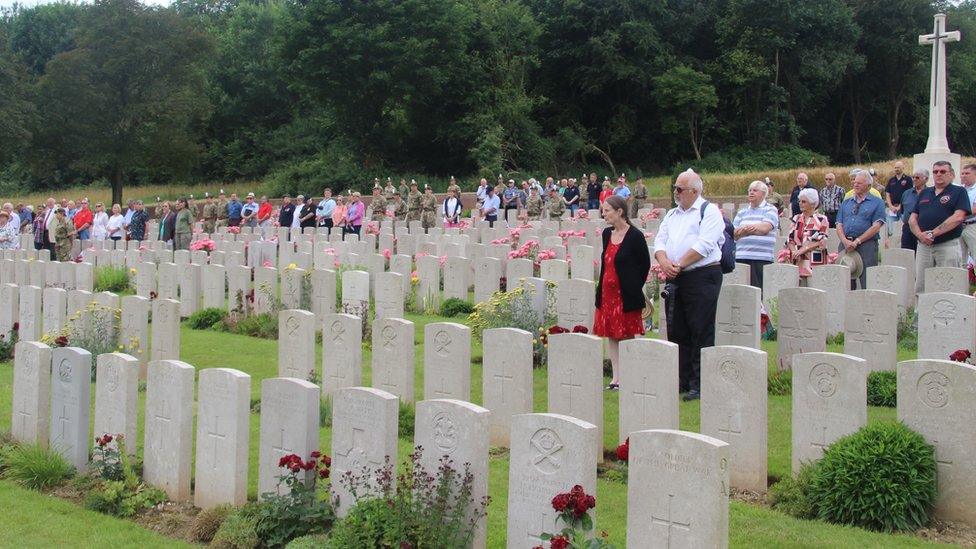
People pay their respects to the Welsh soldiers who fell at Mametz Wood in Flatiron Copse cemetery
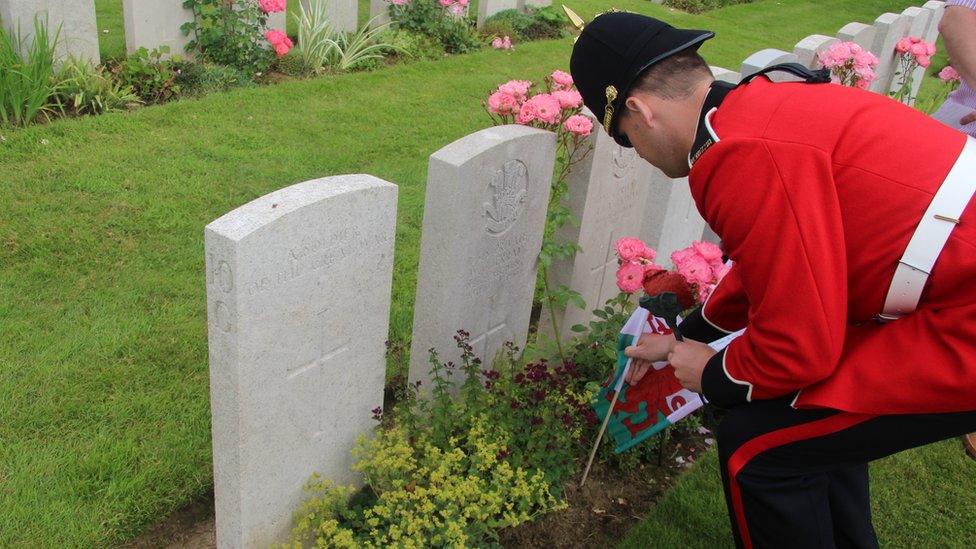
A member of the band of the Royal Welsh lays a flag at the grave of a Welsh soldier at Flatiron Copse cemetery
Concerts were also held in the village of Mametz.
The band of the Royal Welsh Regiment performed on the village green and the Treorchy Male Voice Choir gave a concert in the Basilica of Albert.
Chorister Arthur Miles, from Ton Pentre, Rhondda Cynon Taff, paid his own private tribute as his father, Isaac, fought in the battle.
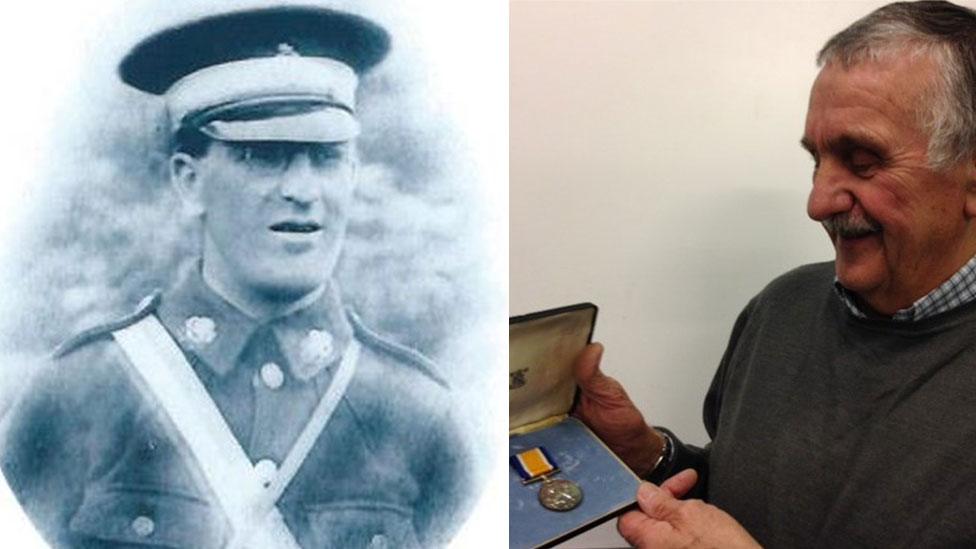
Isaac Miles (l) and his son, Arthur Miles (r)
Battle for Mametz Wood explained
Back in Wales, Cardiff's first permanent memorial to people from the city who died during World War One was unveiled at Hendre Park Lake.
More than 1,000 trees have been planted, creating a memorial wood.
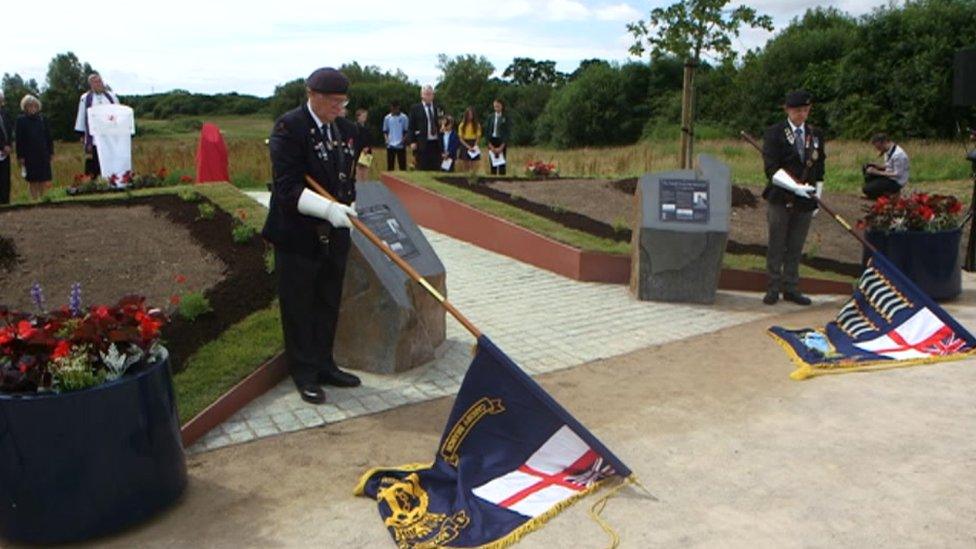
Respects paid at Hendre Park Lake
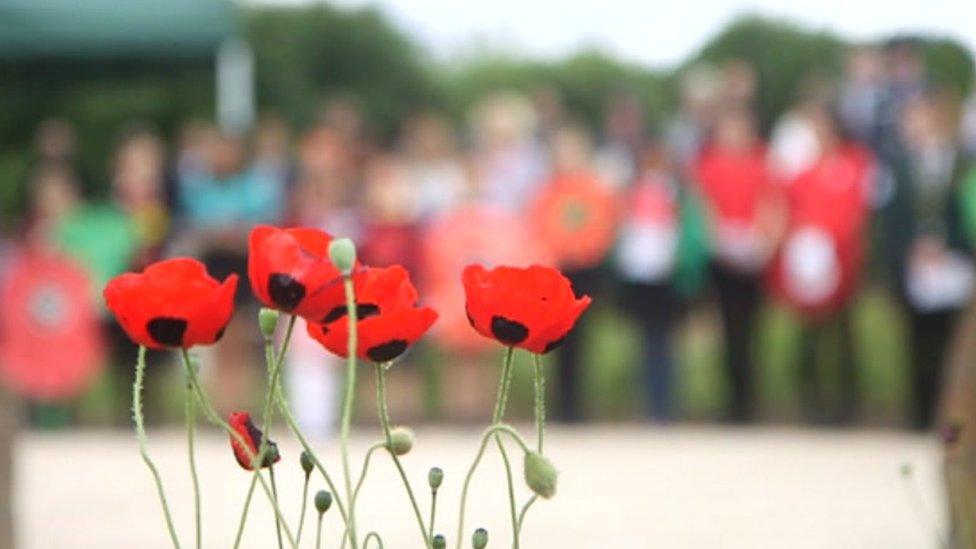
Poppies at Hendre Park Lake

In the first of two written documentaries, Lt Gen Jonathon Riley, late of the Royal Welsh Fusiliers, described the events leading up to and during the battle.
In his second instalment, the former Commander British Forces Iraq and Deputy Commander NATO forces in Afghanistan explored the battle itself and the extraordinary literary legacy of Mametz Wood.

A service was also held at the cenotaph in Blaenavon, Torfaen, to honour 18 local people killed during the battle and those who survived.
In Caernarfon, hundreds of people gathered at the castle after a remembrance service at St Mary's Garrison Church.
A memorial garden has been created outside the Royal Welch Fusiliers Museum in the castle, with members of the public invited to plant a cross and poppy.
Mametz Wood: 'Massively important' to remember in Wales
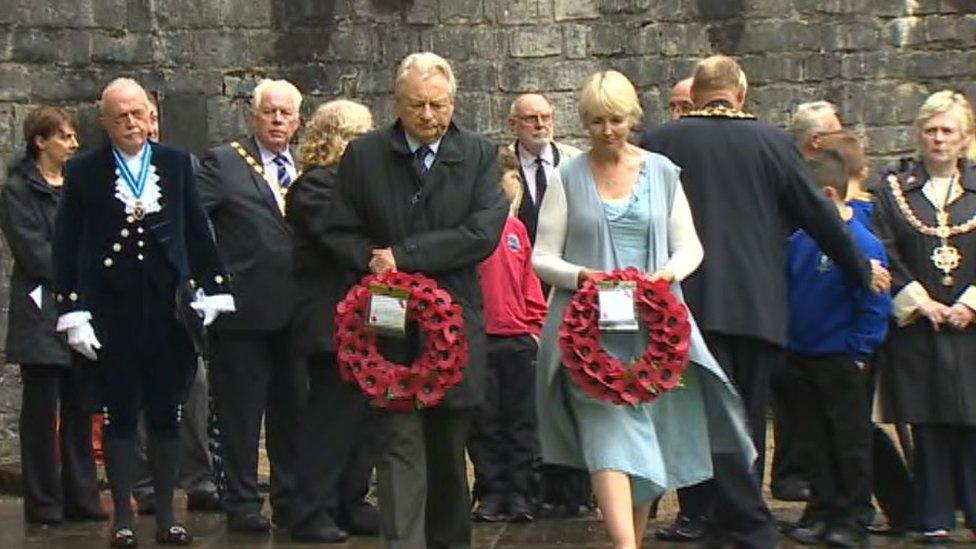
Assembly members Lord Dafydd Elis-Thomas and Sian Gwenllian took part in the ceremony
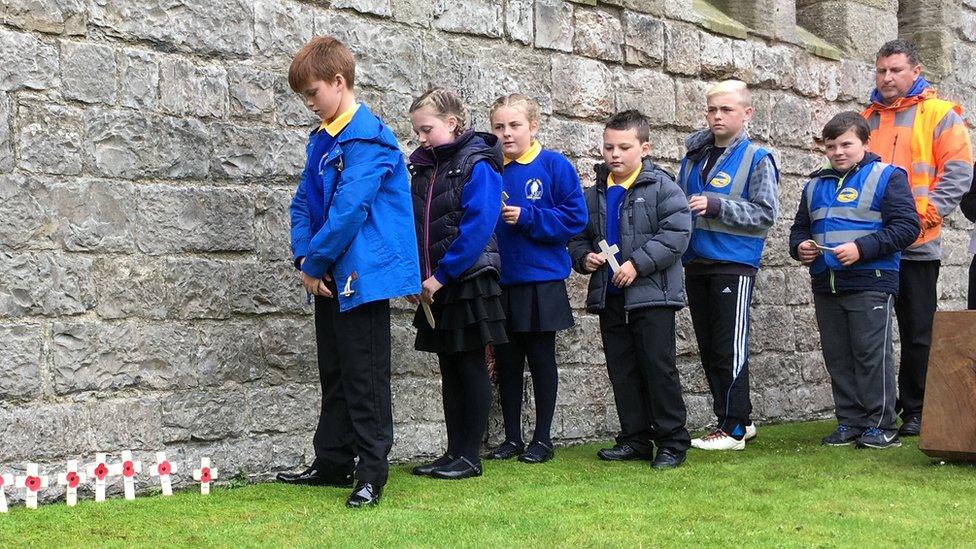
Ysgol Rhosgadfan pupils plant poppy crosses in Caernarfon's memorial garden
Thousands of handmade poppies have gone on display in Cardiff Bay.
The Lads of Wales To War exhibition at the Pierhead also features a replica of the Mametz dragon.
Community centre Craft of Hearts, based in Tonypandy, Rhondda Cynon Taff, made the display and said the poppies were "a symbol of remembrance" and "hope".
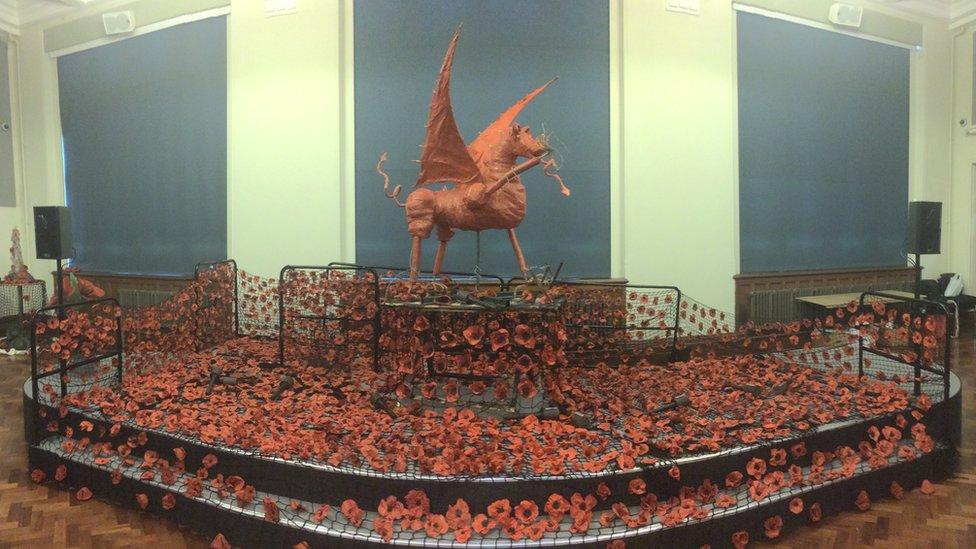
Poppies on display at the Pierhead in Cardiff Bay
Meanwhile in Denbighshire a parade took place with 4,000 handmade poppies.
Schoolchildren from across Ruthin helped to make the poppies to mark the centenary of the battle of Mametz Wood.
It was one of many commemorative events held in the town, organised by Ruthin Community Group.
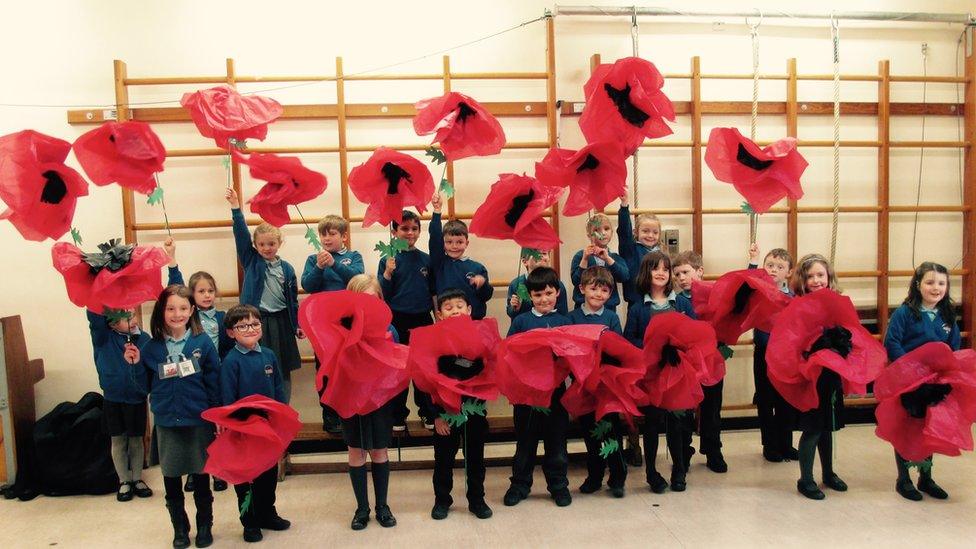
Children from Rhos St Primary School will be among those carrying their poppies at the parade
A painting depicting the battle of Mametz Wood was the centrepiece of an exhibition at the National Museum Wales.
Welsh artist Christopher Williams was making his living as a portrait artist when he was commissioned to commemorate Mametz Wood by the Secretary of State for War David Lloyd George.
He visited the Somme in November 1916 - four months after the battle.
When he died aged 61 in 1934, Lloyd George described him as "one of the most gifted artists Wales has produced".
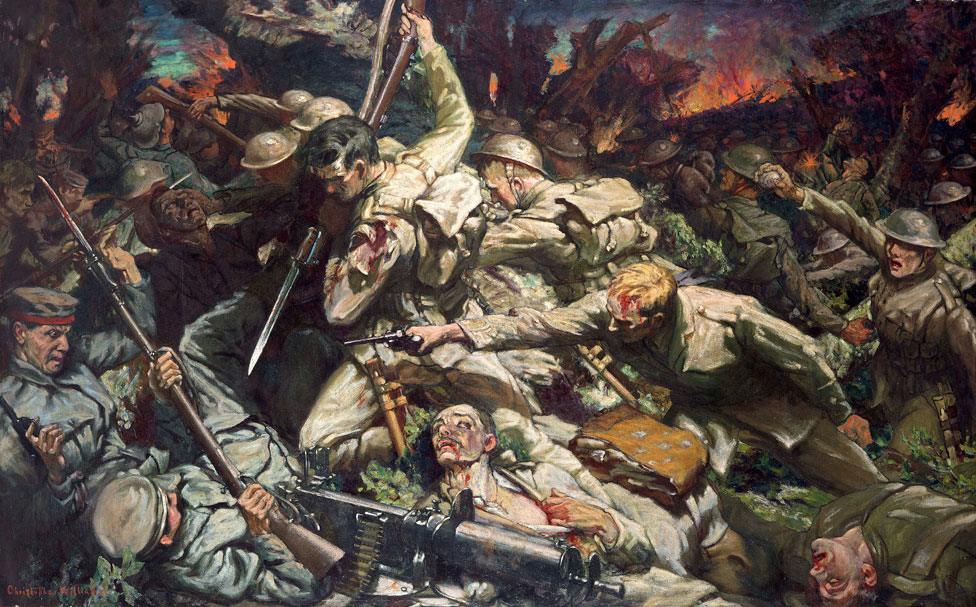
Christopher Williams (1873-1934), The Welsh Division at Mametz Wood, 1916
Personal stories have also been told during the commemorations.
Former rugby player Gareth Thomas retraced the steps of his ancestors from the Valleys to Mametz Wood.
He visited the site of the battlefield where two of his great uncles were among those who died fighting against the German army in the Somme.
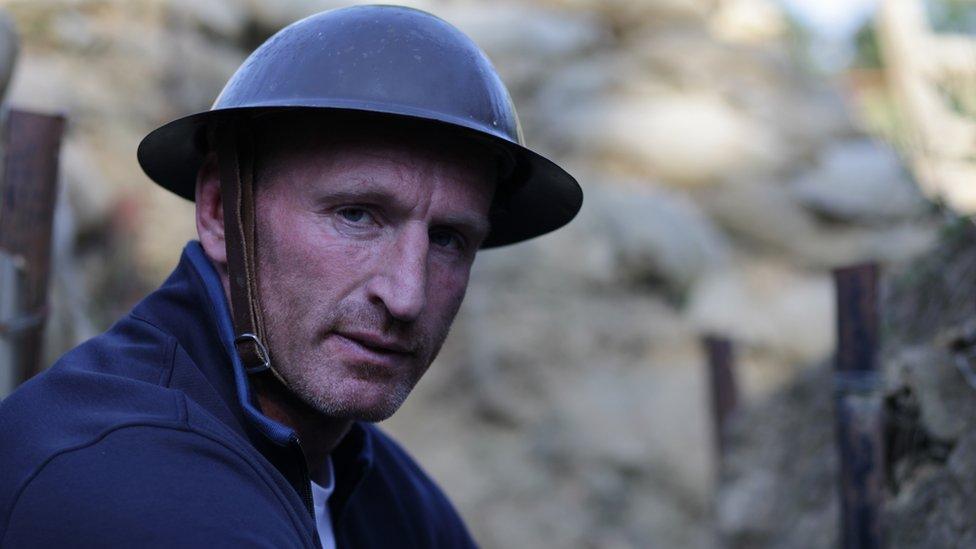
Gareth Thomas visited Mametz Wood to see the battleground where hundreds of soldiers died
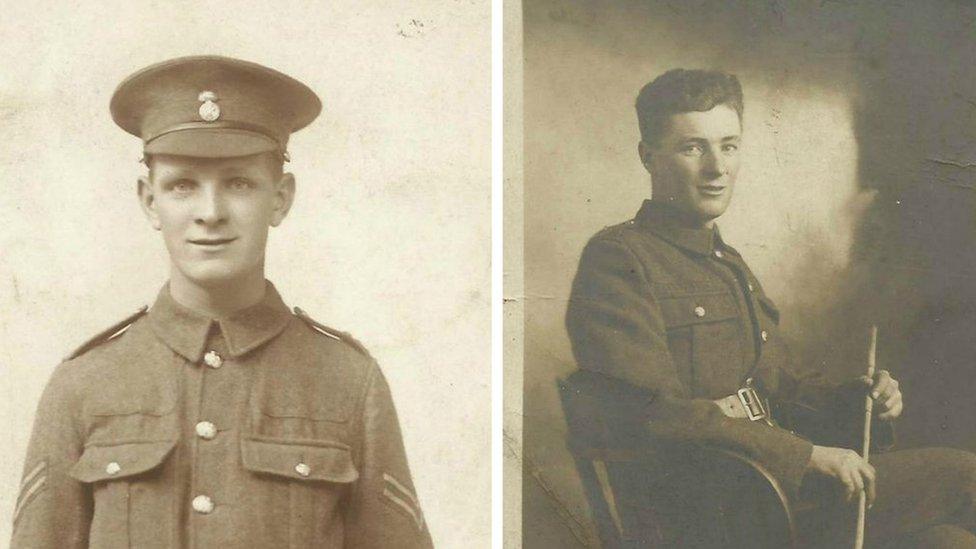
All the family had left to remember Edward and William Thomas was a photo of each of them in their uniforms
When war broke out in 1914, George and May Phillips were running a bakery in a small village near Hanmer, now in Wrexham.
They had four sons - Sydney, Fred, Arthur and Norman - and a daughter, Elsie.
Arthur was the first to answer Kitchener's call, joining the 16th Battalion of the Royal Welsh Fusiliers in November 1914, aged 19.
His older brothers Fred, 21, and Syd, 27, followed two months later.
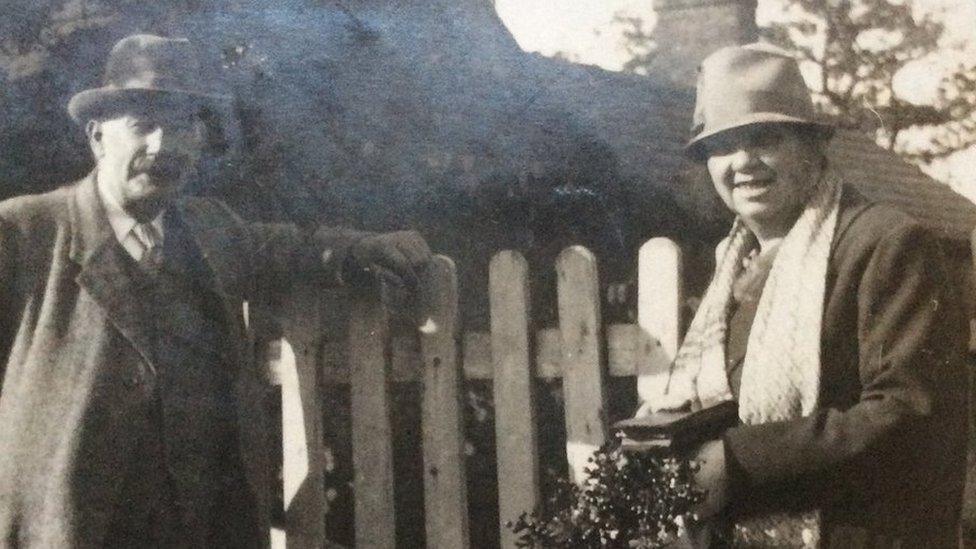
George and May Phillips
Their adventure began on 3 December 1915, when they entered France as part of 113 Brigade of the 38th (Welsh) Division.
Just over seven months later, two of them would be dead; the other back in Britain, suffering from shell shock and never to fully recover.
"Fred and Arthur were killed on the same day at Mametz Wood," said Alison Parry, whose grandfather was the men's youngest brother Norman.
"No one knows exactly where they are buried but their names are on the Memorial of the Missing at Thiepval."
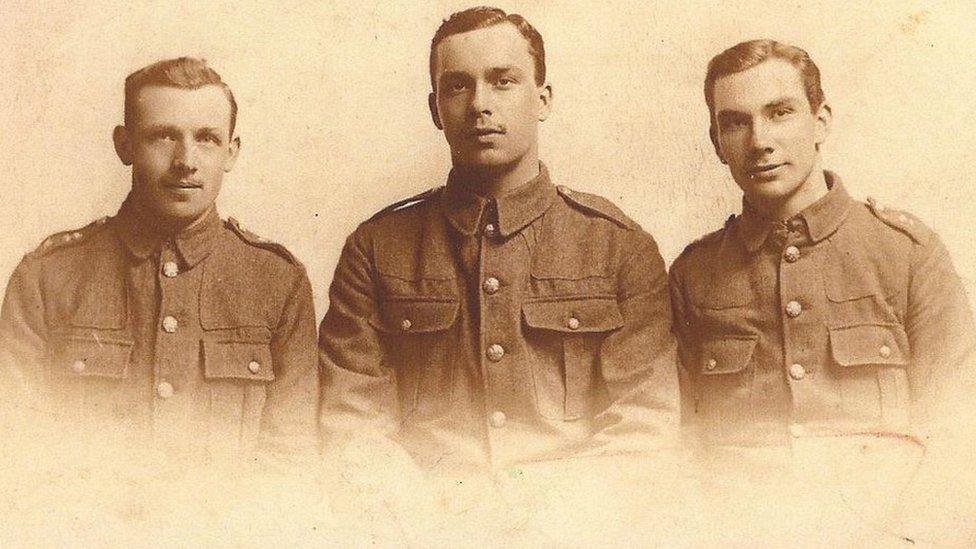
Syd, Arthur and Fred Phillips - three brothers went to war but only one returned
BBC Wales's Roger Pinney explored the story of Fred Rowlands, a soldier killed on the first day in the battle of Mametz Wood.
He was born in Welshpool, but moved to the south Wales valleys when coal was king and jobs plentiful.
By the time war broke out in 1914, he was a timber man working underground at the International Colliery in Blaengarw.
Within a month he had enlisted with the Cardiff City Battalion of the Welch Regiment.
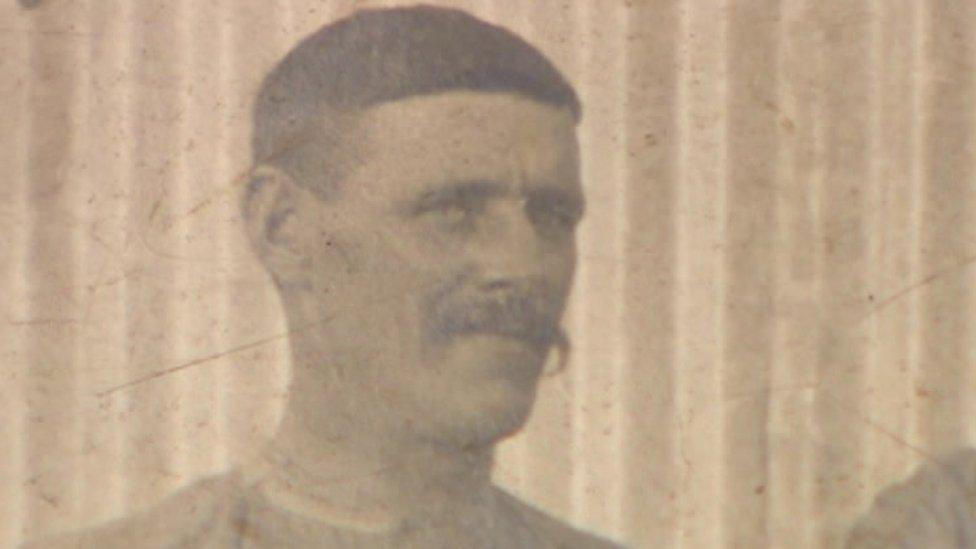
Fred Rowlands
On 7 July 1916 the 38th (Welsh) Division was ordered into battle, with their orders to take Mametz Wood from the German soldiers.
Fred Rowlands' battalion, along with the 1st Gwent Battalion from the South Wales Borderers, led the attack and were caught in murderous cross-fire.
The 38th (Welsh) Division was ordered to attack again the next day and the next. It took five days to capture most of Mametz Wood.
The signs of war are still visible in the woods today.
Photographer Aled Rhys Hughes, from the Rhondda, has captured the haunting history in a series of pictures.
He has visited Mametz every summer for the last five years photographing the landscape for a book on how the woodland still reflects the events of July 1916.
"I was immediately taken hold of by the place, or rather the place took hold of me," he said.
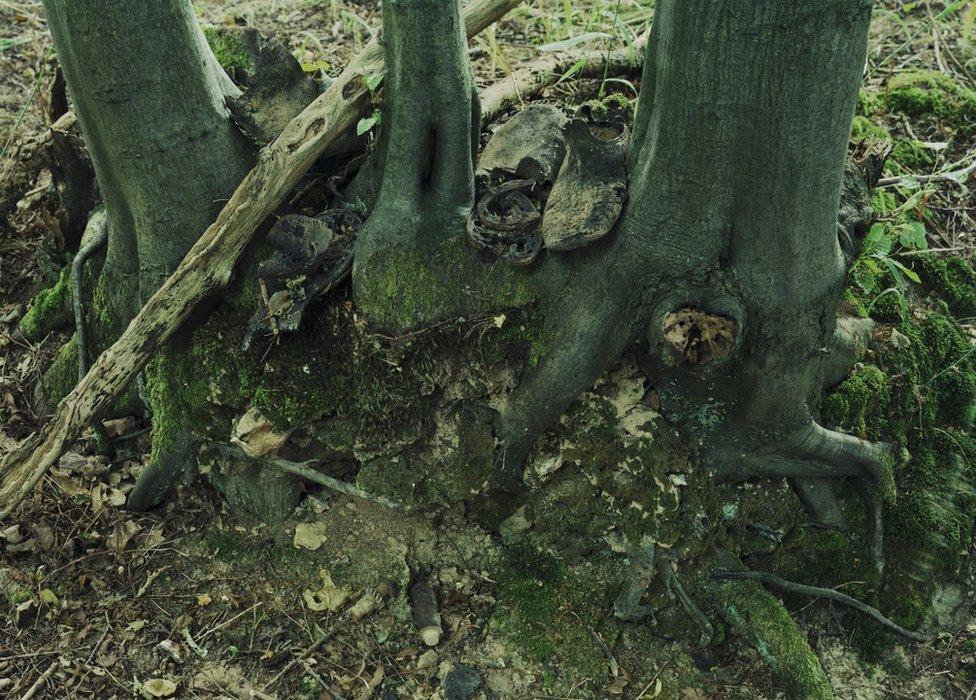
Live shells and detonators are unearthed by tree roots as army boots are nestled between tree trunks above
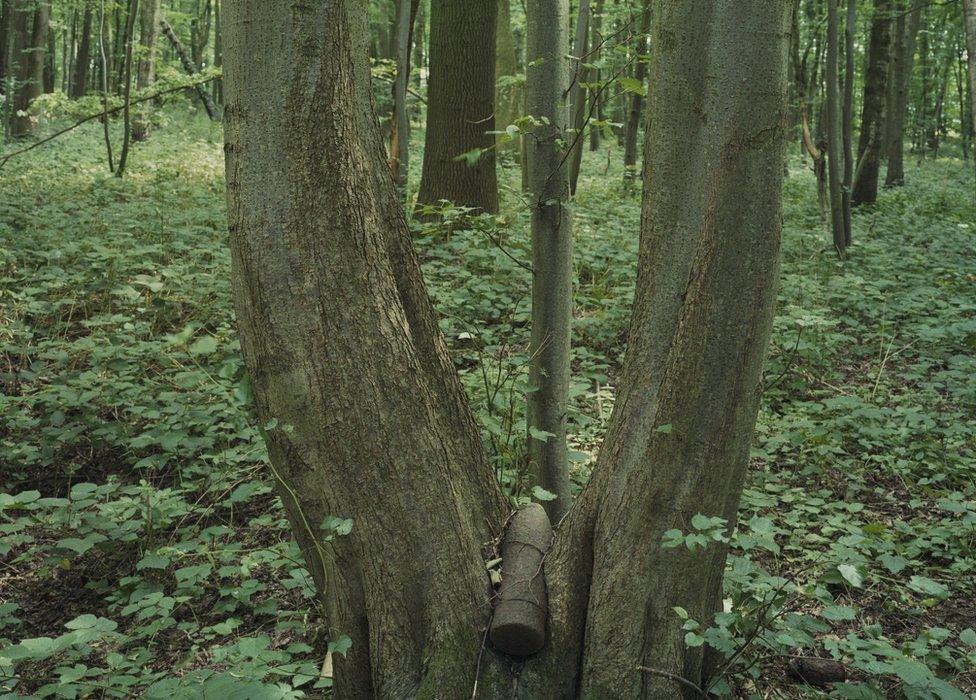
A shell stays wedged in a tree, a century after the battle took place
One story which has never been told until now, is that of the brave men tasked with evacuating the wounded from the battlefield.
The 38th Division had three Field Ambulance units, all raised in Wales towards the end of 1914 and early 1915.
The 130th (St John) Field Ambulance was the only unit in World War One allowed to use the title "St John" in its name and to wear the St John eight pointed cross insignia on its uniforms.
Oliver Young's experiences at the battle of Mametz Wood
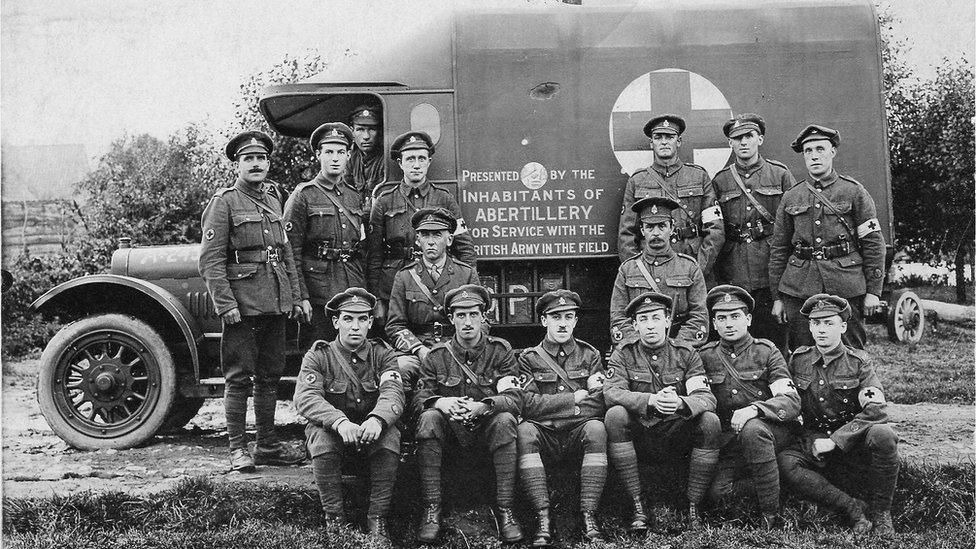
The unit was raised mainly from St John-trained men from across the south Wales coalfields – Amman, Garw, Ogmore Vale and Rhondda valleys and Gwent
To find out how the war was being reported 100 years ago, BBC Radio Wales has published daily bulletins from the frontline.
Here is how the news in Wales might have sounded on 4 July 1916:
A bulletin from the frontline on this day 100 years ago.
5 July 1916:
Hundreds were injured in Mametz 'great push', the bulletin said
6 July 1916:
War bulletin: July 6 1916
7 July 1916:
Mametz Wood battle beings
8 July 1916:
Mametz soldiers 'cut down like corn'
11 July 1916:
Mametz soldiers faced men 'like tigers'
12 July 1916:
Final push in Mametz Wood battle
13 July 1916:
Mametz soldiers hailed as heroes
14 July 1916:
Mametz Wood battle 'successful'
15 July 1916:
King praises Welsh troops at Mametz Wood
- Published4 July 2016
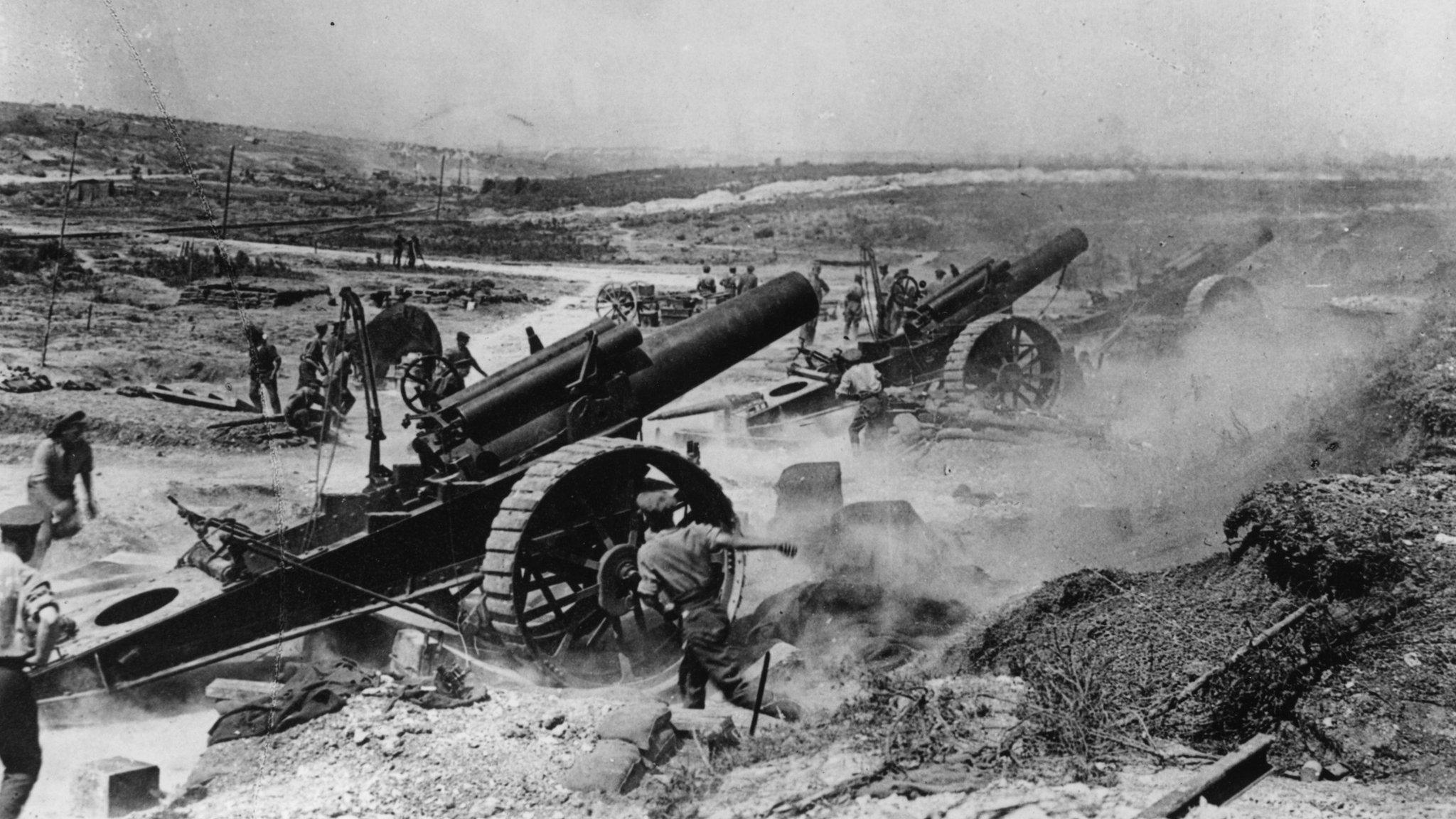
- Published8 July 2016

- Published5 July 2016

- Published9 July 2016
